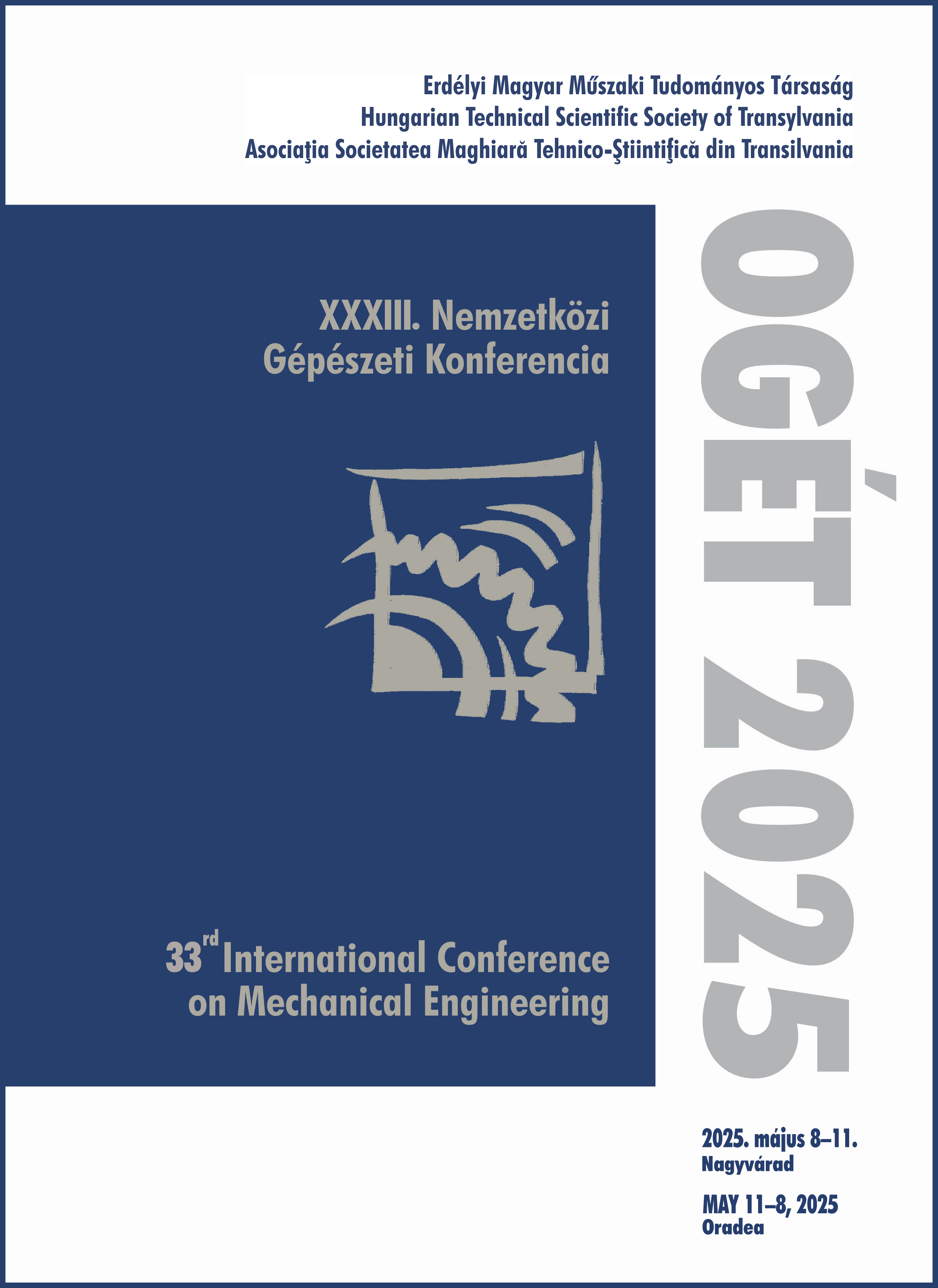In-situ habosodó biopolimer filamentek fejlesztése különböző hatásmechanizmusú habképzőszerek alkalmazásával 3D nyomtatási célokra
Development of in-situ foamable biopolymer filaments using different types of blowing agents for 3D printing
Keywords:
biopolymer, 3D printing, in-situ foaming filament, environmental protection, /, biopolimer, 3D nyomtatás, in-situ habosodó filament, környezetvédelemAbstract
Biopolymers, in specific Polylactic Acid (PLA), are gaining more attention due to the stricter sustainability directives, as they are derived from renewable sources and are biodegradable. In our research, we developed biopolymer-based in-situ foaming filaments by investigating the applicability of different blowing agents with different mechanisms of action. After selecting the optimal blowing agent, we analyzed the correlations between printing parameters and the cell structure formed. Understanding these interactions will allow the development of test specimens with controlled porosity and variable density along the cross-section. The aim was to ensure maximum expansion and reduce material use.
Kivonat
A biopolimerek, különösen a politejsav (PLA), egyre nagyobb figyelmet kapnak a fenntarthatósági direktívák szigorodása miatt, mivel megújuló forrásból származnak és biológiailag lebonthatóak. Kutatásunk során biopolimer alapú, in-situ habosodó filamenteket fejlesztettünk, különböző hatásmechanizmusú habképzőszerek alkalmazhatóságát vizsgálva. Az optimális habképzőszer kiválasztását követően elemeztük a nyomtatási paraméterek és a kialakuló cellaszerkezet közötti összefüggéseket. Az összefüggések megértése lehetővé teszi olyan próbatestek gyártását, amelyek szabályozott porozitással és a keresztmetszet mentén változó sűrűséggel rendelkeznek. A cél a maximális expanzió biztosítása és az anyagfelhasználás csökkentése.
References
Pan A. Q., Huang Z. F., Guo R. J., Liu J. Effect of FDM Process on Adhesive Strength of Polylactic Acid(PLA) Filament. Key Engineering Materials. Trans Tech Publications Ltd., 2015, 667, 181–186.
Kalia K., Francoeur B., Amirkhizi A., Ameli A. In Situ Foam 3D Printing of Microcellular Structures Using Material Extrusion Additive Manufacturing. ACS Applied Msterials & Interfaces. ACS Publications, 2022, 14(19), 22454-22465.
Nieduzak Z., Hart S., Josepf Y., Kalia K., Ameli A. In-situ foam 3D-printing of recycled HDPE/PP blend. in SPE FOAMS® 2022. Indianapolis, USA, 2022
Damanpack A. R., André S., Bodaghi M. Porous PLAs with Controllable Density by FDM 3D Printing and Chemical Foaming Agent. Micromachines. MDPI, 2021, 12(8), 866.
Kalia K., Ameli A. Additive manufacturing of functionally graded foams: Material extrusion process design, part design, and mechanical testing. Additive Manufacturing. Elsevier, 2024, 79, 103945.
Kalia K., Amirkhizi A., Ameli A. The effect of melt flow rate and print speed on the density and microcellular structure of 3D printed polylactic acid foams. AIP Conference Proceeding. AIP Publishing, 2023, 2884, 140003.
Li M., Jiang J., Hu B., Zhai W. Fused deposition modeling of hierarchical porous polyetherimide assisted by an in-situ CO2 foaming technology. Composites Science and Technology. Elsevier, 2020, 200, 108454.


